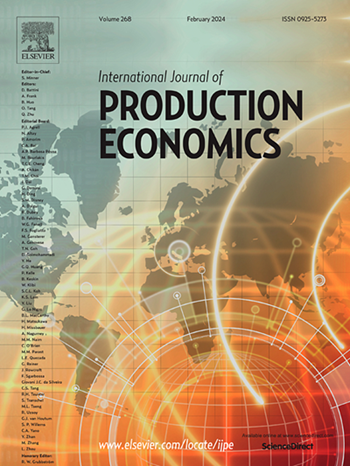A digital twin framework integrated with a mixed proactive-reactive model for human milk supply chain planning
IF 10
1区 工程技术
Q1 ENGINEERING, INDUSTRIAL
引用次数: 0
Abstract
Human milk is critical for infant development, particularly for premature infants or those whose mothers face supply challenges. Existing literature on the human milk supply chain (HMSC) typically relies on static approaches that overlook the inherent uncertainties and dynamic nature of the network. Consequently, this paper proposes a novel framework that integrates simulation and optimization techniques within a digital HMSC layer to dynamically compute optimal recipe levels required to maintain high service standards in neonatal intensive care units (NICUs). The simulation models the process of milk deposit collection at human milk banks (HMBs) by incorporating various stochastic factors to reflect real-world complexities. Subsequently, the mathematical model is implemented in two phases within the physical HMSC. In the proactive phase, production recipes are generated based on the capacities and requirements of HMBs, and delivered to NICUs. In the reactive phase, a clustering approach among NICUs is developed, coupled with lateral transshipments, to prevent shortages and reduce wastage. By applying a rolling horizon approach, analysis based on data from Tehran province demonstrates that the proposed framework outperforms alternative methods. Compared to a digital twin that excludes the reactive phase, our framework achieves superior performance by integrating lateral transshipments. In conclusion, our proposed framework has the potential to mitigate supply disruptions, reduce unmet demand, and maintain high service levels within the network.
一个集成了混合主动-反应模型的数字孪生框架,用于母乳供应链规划
母乳对婴儿发育至关重要,特别是对早产儿或母亲面临供应困难的婴儿。关于母乳供应链(HMSC)的现有文献通常依赖于静态方法,忽略了网络固有的不确定性和动态性。因此,本文提出了一个新的框架,该框架集成了数字HMSC层中的模拟和优化技术,以动态计算维持新生儿重症监护病房(nicu)高服务标准所需的最佳配方水平。该模拟通过结合各种随机因素来反映现实世界的复杂性,模拟了母乳银行(HMBs)的乳沉积物收集过程。随后,在物理HMSC中分两个阶段实现数学模型。在主动阶段,根据hmb的容量和需求生成生产配方,并交付给新生儿重症监护病房。在反应阶段,在新生儿重症监护病房之间开发了集群方法,加上横向转运,以防止短缺和减少浪费。通过应用滚动地平线方法,基于德黑兰省数据的分析表明,所提出的框架优于其他方法。与排除反应阶段的数字孪生相比,我们的框架通过集成横向转运实现了卓越的性能。总之,我们提出的框架有可能减轻供应中断,减少未满足的需求,并保持网络内的高服务水平。
本文章由计算机程序翻译,如有差异,请以英文原文为准。
求助全文
约1分钟内获得全文
求助全文
来源期刊
CiteScore
21.40
自引率
7.50%
发文量
266
审稿时长
52 days
期刊介绍:
The International Journal of Production Economics focuses on the interface between engineering and management. It covers all aspects of manufacturing and process industries, as well as production in general. The journal is interdisciplinary, considering activities throughout the product life cycle and material flow cycle. It aims to disseminate knowledge for improving industrial practice and strengthening the theoretical base for decision making. The journal serves as a forum for exchanging ideas and presenting new developments in theory and application, combining academic standards with practical value for industrial applications.

 求助内容:
求助内容: 应助结果提醒方式:
应助结果提醒方式:


